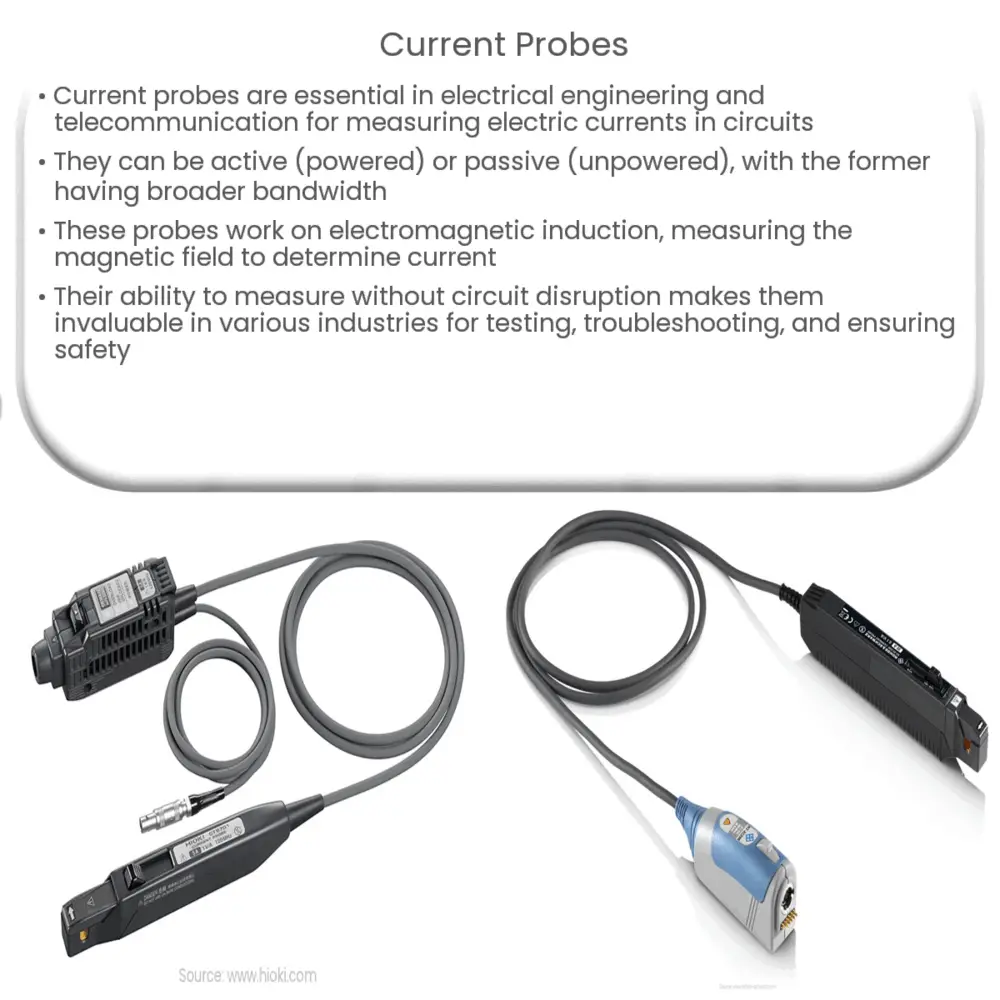Explore our comprehensive guide on Current Probes, a vital tool in electrical engineering and telecommunications. Understand their types, operation, key features, and diverse applications across industries.

Introduction to Current Probes
Current probes, often found in electrical engineering and telecommunication fields, play a crucial role in measuring and monitoring electric currents in circuits. They enable engineers to gain an in-depth understanding of the behavior of their electrical systems, from simple devices to complex networks.
Understanding Current Probes
1 A current probe can be defined as a device that is designed to measure current, typically within an electrical wire, without causing any disruption to the circuit. It is essential in both the design phase and the troubleshooting process of electrical systems, providing valuable insight into the current flowing through a circuit.
- Current probes can be categorized into two types: active and passive probes.
- Active probes are powered and typically have a broader bandwidth and smaller insertion loss.
- Passive probes, on the other hand, are unpowered and can measure without any power source. They are often used for low-frequency applications.
How Current Probes Work
Current probes work on the principle of electromagnetic induction. When an electric current passes through a conductor, it creates a magnetic field around it. The probe measures this magnetic field, enabling the determination of the current in the wire. They are commonly clamped onto a single wire in a circuit, and the measured signal can be observed on an oscilloscope.
The Importance of Current Probes
Current probes are an indispensable tool in the electrical engineering and telecommunication industries. Their importance lies in their ability to measure current without disconnecting any part of the circuit or causing any disruption in the system.2
- They are vital for testing and validating circuit designs, ensuring they meet the required specifications.
- Current probes are used for troubleshooting, helping engineers identify any faults or issues in the system.
- They are also useful in maintaining and improving the performance of electrical systems, thereby ensuring safety and efficiency.
Key Features of Current Probes
Current probes come with a variety of features designed to suit different applications and requirements. Some of the key features include:3
- Bandwidth: The bandwidth of a current probe is the range of frequencies it can accurately measure. Higher bandwidth probes can measure a wider range of frequencies.
- Sensitivity: This refers to the smallest change in current that the probe can detect.
- Maximum Current: Each probe is designed to measure up to a certain level of current. Exceeding this level can damage the probe.
Applications of Current Probes
Current probes are used in a wide range of applications across various industries, including:
- Electronics Manufacturing: Current probes are used to test and validate circuit designs, ensuring they meet required specifications and safety standards.
- Automotive Industry: In the automotive industry, current probes help in diagnosing electrical problems in vehicles.
- Telecommunication: Current probes play a vital role in testing and troubleshooting in telecommunication networks, ensuring smooth and efficient communication.
- Energy Sector: In the energy sector, current probes help in monitoring and controlling power distribution systems, contributing to energy efficiency and sustainability.
Choosing the Right Current Probe
Choosing the right current probe is essential for accurate measurements. Several factors need to be considered when selecting a current probe:
- Measurement Range: The probe should be able to measure the current range that you expect in your circuit.
- Frequency Range: If you’re dealing with high-frequency signals, you’ll need a probe with a suitable frequency range.
- Type of Probe: Depending on the application, you may need either an active or a passive probe.
Conclusion
In conclusion, current probes are an invaluable tool in various fields and industries. Their ability to measure current accurately without causing any disruption to the circuit makes them an essential component in electrical and electronic engineering. Whether it’s validating a new circuit design, troubleshooting an existing system, or ensuring efficient power distribution, current probes play a crucial role in our technologically advanced world.4

